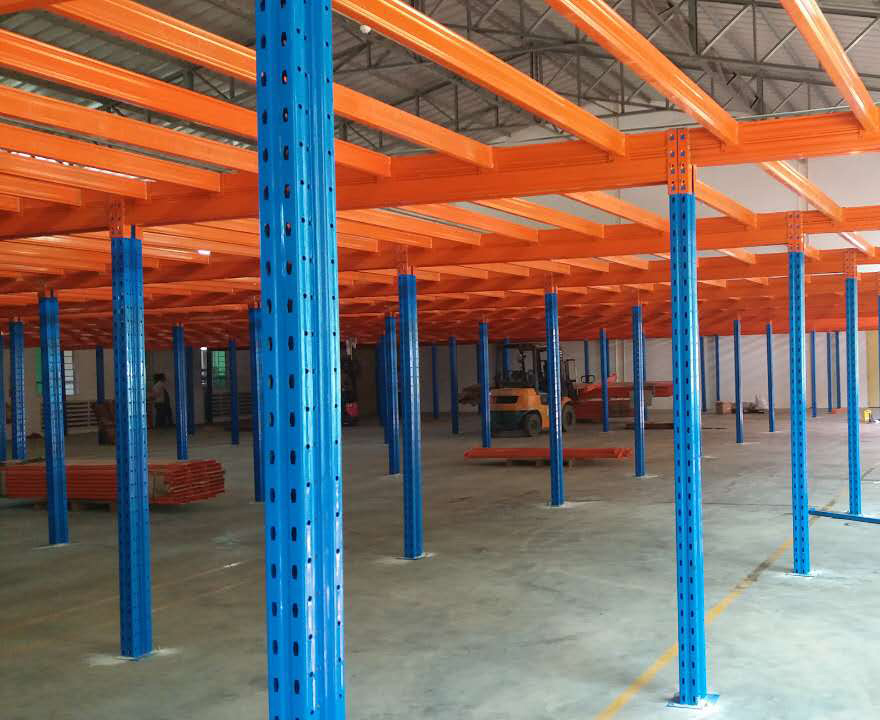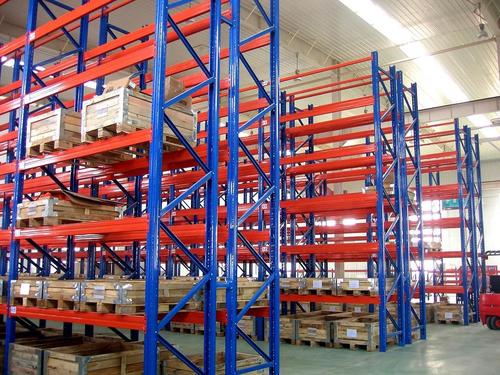In the relentless pursuit of warehouse efficiency, space is the ultimate currency. Every square foot counts, and how you utilize your vertical and horizontal space directly impacts your bottom line. When storage density and accessibility are paramount, wide pallet racking often emerges as a leading contender. But is it the ideal choice for your specific operation? This deep dive moves beyond the basics to explore the engineering, economic, and operational realities of this robust storage system.

Often referred to as "wide-span shelving" on a larger scale, wide pallet racking is a heavy-duty storage system characterized by its long, uninterrupted beam spans. Unlike traditional selective pallet racking with multiple upright frames, a wide pallet racking system uses fewer uprights to support beams that can extend 10, 12, or even more feet in length. This design creates wide, open bays capable of storing multiple pallets side-by-side, significantly reducing aisle footprint and maximizing storage density within a given area.
The core components—upright frames, beams, and wire decking or pallet supports—are engineered for exceptional load-bearing capacity, often handling several thousand pounds per level. This makes wide pallet racking a versatile solution for a vast array of palletized goods, from manufacturing parts to bulk ingredients.
Why do so many operations turn to this system? The benefits are tangible and directly address common warehouse challenges.
Superior Space Utilization: The primary draw is the dramatic reduction in the number of aisles. By creating wider storage bays, you consolidate your inventory, allowing you to store more pallets in the same footprint or free up valuable floor space for other operational needs.
Enhanced Accessibility and Flexibility: Unlike some high-density systems that sacrifice access for density, wide pallet racking remains a selective system. Every pallet is accessible at any time, without needing to move others. This is ideal for operations requiring First-In, First-Out (FIFO) inventory management or those with a diverse SKU base.
Cost-Effectiveness and Scalability: The design, using fewer upright frames, can sometimes lead to a lower overall material cost compared to dense configurations of standard racking. Furthermore, its modular nature means the system can be easily reconfigured, expanded, or relocated as your storage needs evolve, protecting your long-term investment.
Durability for Heavy Loads: Built to industrial standards, a properly specified wide pallet racking system can support immense weight, making it suitable for storing heavy machinery parts, construction materials, and dense packaged goods.
This storage solution isn't a one-size-fits-all answer, but it excels in specific environments.
Storing Bulky or Oversized Items: One of the most common uses is for products that are too large for a single pallet space. Items like long pipes, large rolls of material, big furniture, or automotive body parts fit perfectly within the expansive bays of a wide pallet racking system.
High-Density Storage for Slower-Moving Goods: For inventory that doesn't require constant, rapid turnover but still needs to be readily available, this system is perfect. It reduces aisle space wasted on infrequently accessed products while keeping them organized and accessible.
Manufacturing and Assembly Line Buffer Zones: The system's layout is excellent for creating efficient buffer storage near production lines, holding large quantities of raw materials or components that are consumed over time.

Investing in a wide pallet racking system requires careful consideration. Rushing the planning stage can lead to inefficiency or, worse, safety hazards.
Assess Your Load Requirements: This is the first and most critical step. You must know the maximum weight of your pallets, including the pallet itself. Don't just consider the average; plan for the heaviest load you might ever store. The dimensions of your pallets (length, width, and height) will directly determine the required beam length and vertical spacing.
Calculate Your Available Space: Precisely measure your warehouse's length, width, and clear ceiling height. Account for obstructions like sprinklers, lights, and columns. This will help you and your supplier model the optimal layout, determining the number of bays, their depth, and the overall height of the wide pallet racking installation.
Understand the Importance of Decking: While not always mandatory, beam-supported wire mesh decking is highly recommended for wide pallet racking. It provides a stable surface for pallets, prevents them from falling through, and enhances overall safety. The gauge and design of the decking must be rated for your load capacity.
Factor in Forklift Compatibility: The width of the aisles you create must be compatible with your material handling equipment. While wider than those in narrow-aisle systems, the aisles in a wide pallet racking setup must still allow your forklifts or pallet jacks to maneuver safely and efficiently. Aisle width is a crucial calculation in the planning process.
The price of a wide pallet racking system is not a single number. It's influenced by several factors:
Material and Gauge: The thickness and quality of the steel used for uprights and beams are the primary cost drivers. Heavier-duty systems command a higher price.
System Size and Configuration: The overall height, number of levels, and total linear footage of the system directly impact the final cost.
Additional Components: Accessories like decking, row spacers, and safety accessories like post protectors and aisle guides add to the total investment.
Installation Complexity: Professional installation is non-negotiable for safety and integrity. The cost will vary based on the size of the project, site conditions, and the time required.
While the initial investment might seem significant, it's essential to view it through the lens of Return on Investment (ROI). The gains in storage density, operational efficiency, and organizational clarity typically justify the expenditure, often paying for itself over time.
A wide pallet racking system is a significant asset, and its safety is paramount. Regular inspections are mandatory. Look for signs of damage, especially dents or bends in the upright frames, which can significantly compromise structural integrity. Ensure all beam connectors are properly engaged and that load capacities are never exceeded. Employee training on proper loading and unloading techniques is a critical component of a safe warehouse environment, preventing accidents and protecting your wide pallet racking investment for years to come.
Q1: What is the maximum weight capacity for a typical wide pallet racking system?
A1: There is no single "typical" capacity, as it is entirely custom-engineered. Capacities can range from 1,000 lbs to over 10,000 lbs per beam level, depending on the beam length, steel gauge, and upright frame design. A professional supplier will calculate the required capacity based on your specific load data.
Q2: Can I mix wide pallet racking with other types of storage systems in the same warehouse?
A2: Absolutely. A hybrid approach is very common. Many facilities use wide pallet racking for bulky or slower-moving inventory while implementing narrower, more dense systems like drive-in or pushback racking for high-volume SKUs. This creates a highly optimized and cost-effective overall storage strategy.
Q3: How does the cost of wide pallet racking compare to drive-in or pushback racking?
A3: Wide pallet racking often has a lower upfront cost per bay than more complex high-density systems like pushback or drive-in racking. However, the storage density of those systems is higher. The cost-benefit analysis depends on your need for selectivity versus maximum density. Wide pallet racking offers an excellent balance of density and 100% selectivity at a competitive price point.
Q4: What are the critical clearance measurements I need to provide for a quote?
A4: For an accurate quote and design, you should provide: 1) The exact dimensions of your pallets (length, width, height), 2) The total weight of your heaviest loaded pallet, 3) Your warehouse's clear ceiling height (from floor to the lowest obstruction), and 4) The make and model of your forklift to determine the necessary aisle width.
Q5: My business is growing quickly. Is wide pallet racking a scalable solution?
A5: Yes, its modular design makes it one of the most scalable storage solutions available. You can typically start with a specific footprint and easily add more bays or even increase the height of the system later. When planning your initial installation, discuss future expansion possibilities with your supplier to ensure a seamless integration down the line.
 Wechat
Wechat
 Whatsapp
Whatsapp